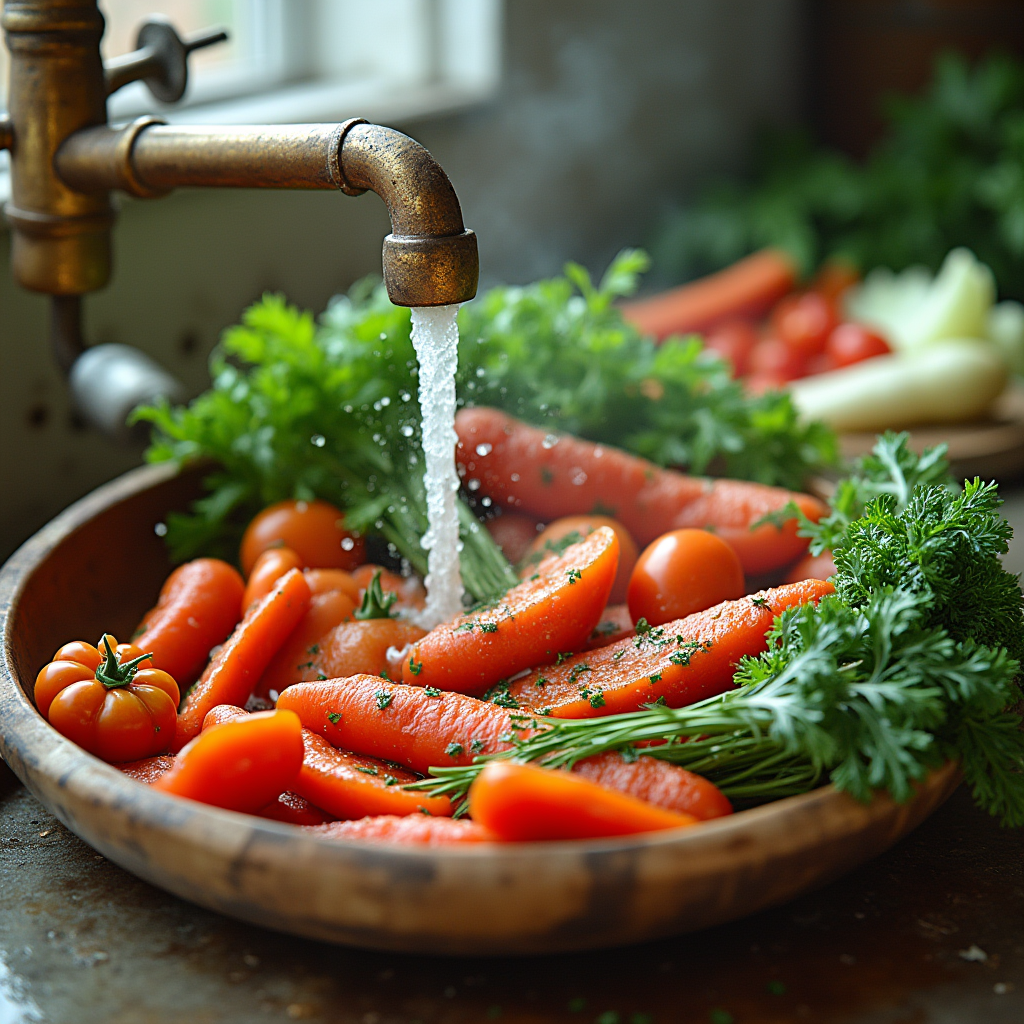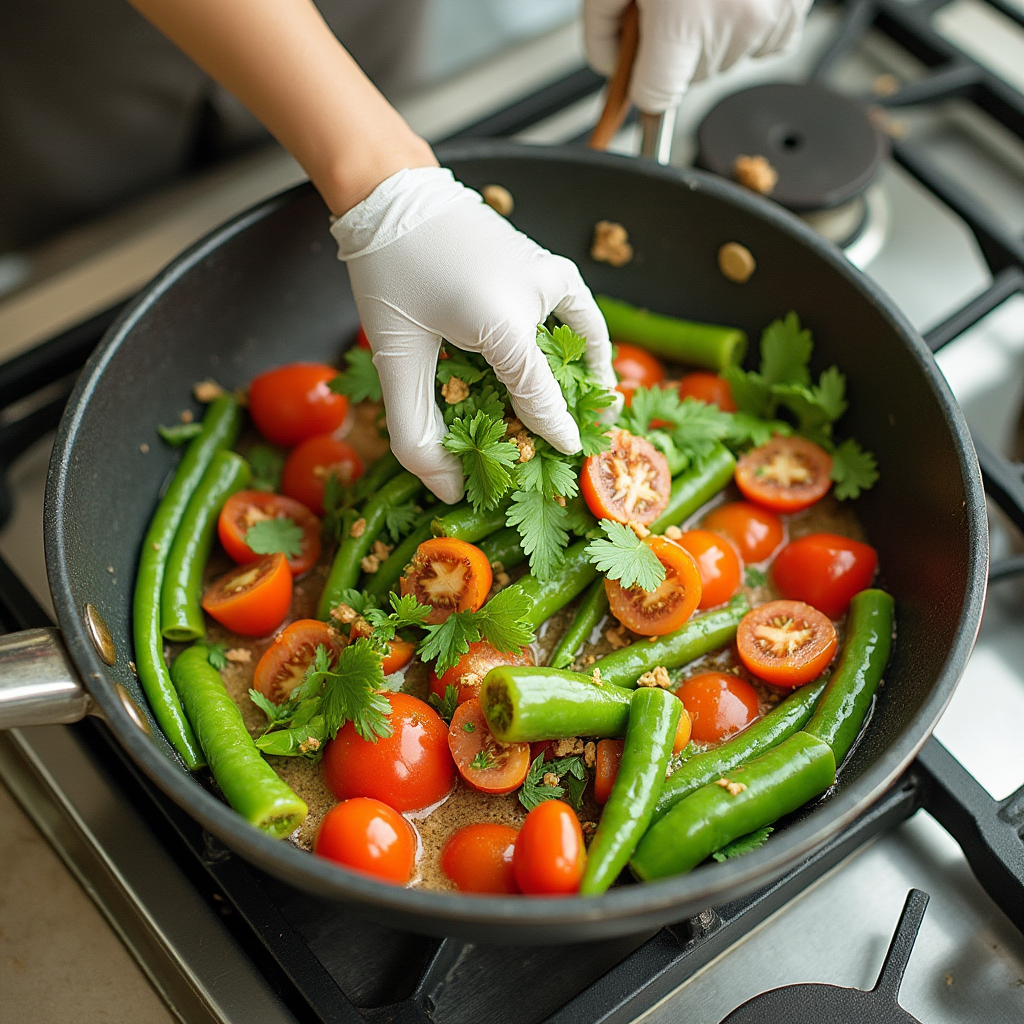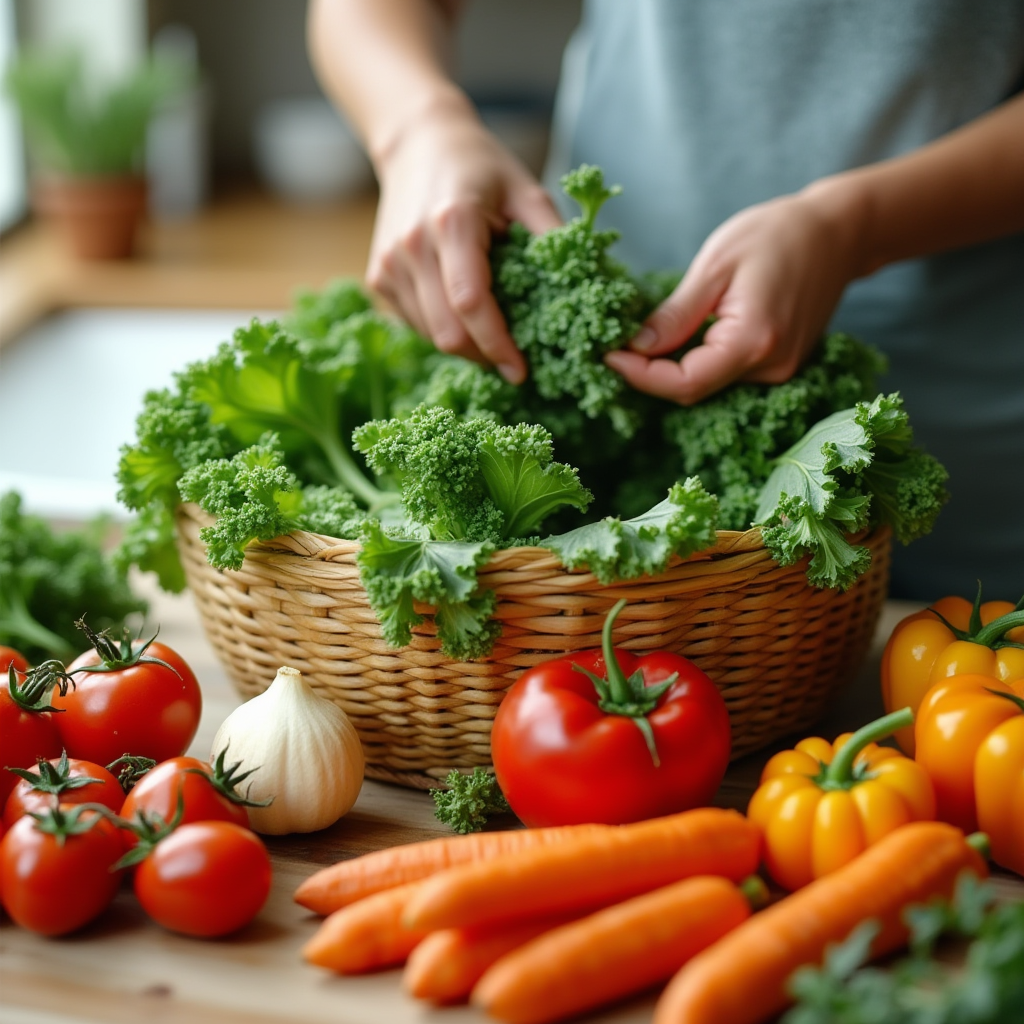Keeping your vegetables clean is essential for maintaining their freshness, removing harmful bacteria, and ensuring a healthy diet. Whether you’re prepping veggies for a salad, stir-fry, or snack, taking the time to clean them thoroughly is a vital step. Here’s a complete guide to washing your vegetables like a pro!
Why Clean Your Vegetables?
Unwashed vegetables can carry dirt, pesticides, and harmful bacteria like Salmonella or E. coli. Cleaning them reduces the risk of contamination and preserves their natural flavors. Additionally, clean vegetables ensure that you’re consuming nutrient-packed produce without any unwanted residues.

Tips for Cleaning Vegetables Thoroughly
- Start with Clean Hands and Utensils
Always wash your hands with soap and water before handling vegetables. Also, ensure that your knives, cutting boards, and sinks are clean to prevent cross-contamination. - Use Cold Water
Rinse your vegetables under cold running water. This helps remove visible dirt and debris without damaging delicate produce like leafy greens. - Use a Vegetable Brush for Firm Produce
For firm vegetables like carrots, potatoes, and cucumbers, use a vegetable brush to scrub off any dirt or waxy residues. - Soak Leafy Greens
- Place leafy vegetables like kale, spinach, or lettuce in a large bowl of cold water.
- Swirl them gently to loosen dirt and grit.
- Remove the leaves, rinse under running water, and dry using a salad spinner.
- Salt or Vinegar Soaks for Extra Cleaning
- Add 1–2 tablespoons of salt or vinegar to a bowl of water for cleaning vegetables that are hard to scrub, such as broccoli or cauliflower.
- Let them soak for 10–15 minutes before rinsing thoroughly.
- Remove Outer Layers
For vegetables like cabbage or onions, peel off the outermost layers, as they tend to harbor dirt and bacteria. - Dry Properly
Pat your vegetables dry with a clean kitchen towel or paper towels. Proper drying helps prevent mold and keeps them fresh longer.

Vegetable-Specific Cleaning Tips
- Tomatoes and Peppers: Rinse under running water and gently rub the skin with your fingers.
- Carrots and Potatoes: Use a brush to remove dirt, especially if you’re leaving the skin on.
- Broccoli and Cauliflower: Soak in salted water to dislodge insects or debris.
How to Store Clean Vegetables
After cleaning, proper storage is crucial to maintain freshness:
- Store leafy greens in an airtight container with a paper towel to absorb excess moisture.
- For root vegetables like carrots, store them in a cool, dry place.
- Separate ethylene-producing vegetables (like tomatoes) from sensitive produce to prevent premature ripening.
Internal Links for More Tips
- Easy Meal Prep with Fresh Vegetables
- Top 10 Healthy Salad Recipes
- Simple Kitchen Hacks for Busy Cooks
External Resources
- Learn more about food safety on the CDC’s Food Handling Guide.
- Check out FDA’s Tips for Washing Produce
Here are some internal links you can add to your article to enhance navigation and keep visitors engaged on your site:
- Healthy Vegetable Recipes for Busy Days
Link to a page on your site featuring quick and nutritious recipes that use fresh vegetables. - Top 5 Kitchen Tools Every Home Cook Needs
Connect to an article about must-have kitchen tools like vegetable brushes or salad spinners. - How to Meal Prep Like a Pro
Link to a guide on meal prepping, emphasizing the role of clean vegetables in weekly planning. - The Ultimate Guide to Storing Fresh Produce
Include a link to a post on your site that dives deeper into how to store different types of vegetables for maximum freshness. - Boost Your Immune System with These Foods
Relate your content to an article about foods that support immunity, including fresh vegetables. - Quick and Healthy Smoothie Recipes
Add a link to an article showcasing smoothie recipes that incorporate clean, fresh vegetables like spinach or kale.
By following these steps, you can enjoy safe, fresh, and flavorful vegetables every time. Keeping your produce clean not only enhances taste but also ensures your meals are packed with wholesome nutrients. Start practicing these habits today for a healthier kitchen!

